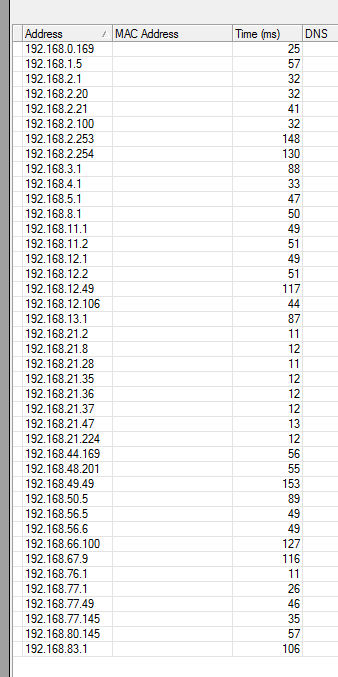Answer the question
In order to leave comments, you need to log in
What to do with private IP addresses of the provider's network?
The situation is this. Once upon a time there was a server on the local network with the most common private address 192.168.1.5 Until they decided to change its address to another one. And here the miracles began. Where this server was specified by name, it suddenly ceased to be available, and the old address continued to ping as if nothing had happened. Mystic? I don't think. I started the route, and at the same time ipscan on private networks and it turned out that the private addresses of the (probably) provider network stick out. 
The provider does not admit his guilt. Inet works? Works. And the fact that the web muzzle of our huawei RH1288 V3 server sticks out should not create problems for you. You never know what else is on the internet.
In connection with this question. What to do with the private addresses of the provider? Block them on the router? Convince the provider that he is wrong? Arrange a DDoS attack?
Answer the question
In order to leave comments, you need to log in
Block the firewall incoming via VAN from these addresses.
So the muzzle sticks out and sticks out, in theory it really shouldn’t interfere with you, with NAT raised on the router
Well, for starters, you can turn dhcp-server towards the subscriber network. will not help - to change the provider.
why do anything? you had a local network, the router wrapped packets in it. you removed this network, the router wraps packets to the default gateway, and this is your provider. but what networks he uses and why it doesn’t concern you at all. don't like it - close the firewall and rejoice
In the glorious city of Krasnoyarsk, about seven years ago, I ran into problems with "striped" addresses :) What is it? And these are addresses from RFC1918, which Krasnoyarsk providers agreed to route among themselves within the city :D Well, the fact that we had the same addresses inside the branch local area did not bother them. Us too - but exactly until a client appeared who was sold such a "striped" under the guise of white :D
I butted heads with the provider for a long time, until he specifically started letting us through NAT :D
In general, I always set up two standard rules - at the entrance to the outside, jam everything that arrived from RFC1918 addresses, at the exit to the outside - accordingly, everything that flies from me from RFC1918 addresses. And what kind of raccoons are jumping from the provider on the network - but what's my business?
Didn't find what you were looking for?
Ask your questionAsk a Question
731 491 924 answers to any question